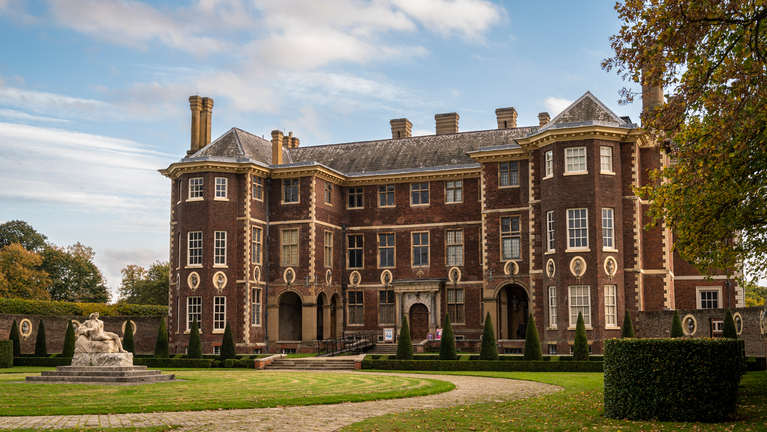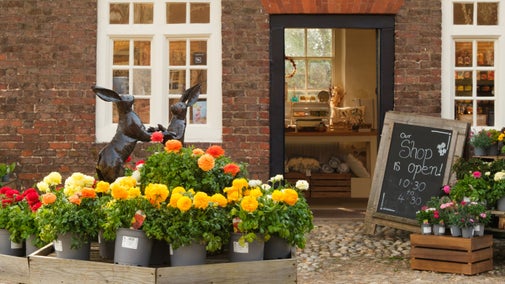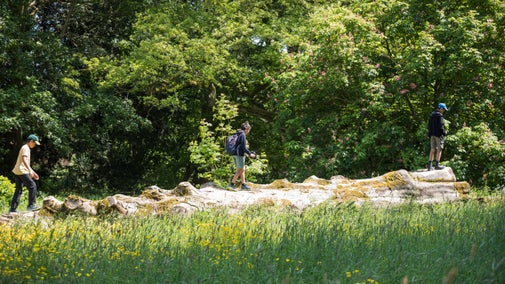
Discover more at Ham House and Garden
Find out when Ham House and Garden is open, how to get here, the things to see and do and more.

Take a walk around the River Thames landscape surrounding Ham House and Garden and explore meadows, woodland and wetlands; a green haven in Greater London.
By the 18th century, this area was known locally as an ‘Arcadia’ – a rural paradise in growing London.
Explore an estate of more than 100 acres which is perfect for walks and an opportunity to get outdoors in the fresh air. Ham House and Garden is connected to this unique London landscape by formal avenues of more than 250 trees stretching between the mansion and its gatehouses in Petersham and Ham.
Discover a patchwork of historic riverside habitat which includes the water meadow, woodland and parkland. Look out for a wide variety of wildlife that call this place home.

These meadows, found on the River Thames between Richmond and Ham, were a part the Ham House estate from the early 17th century until the late 19th century. Grazing has been used to keep Petersham Meadows in shape for over 400 years, and it’s used today as an environmentally friendly way to maintain this historic landscape, and encourage biodiversity and nature to thrive. We now manage this land on behalf of Richmond Council.
The view from Richmond Hill, looking across the meadows, is unique in the UK as the only view protected by an Act of Parliament. The character of the meadows is enhanced by a small herd of cattle for the grazing season.
Conservation grazing is a method of conserving habitats through traditional grazing, and is well-suited to grassland habitats, such as at Petersham Meadows. It works to create vegetation of varying heights, along with small areas of bare ground, to enable species including threatened or rare plants, invertebrates, and birds to thrive. It also allows wildflowers to establish, which in turn provides pollen and nectar for invertebrates, that birds can then respectively feed off.
The cows will help to remove long, coarse grass by using their tongues to leave a ‘tussocky’ appearance, in comparison to sheep who will use their teeth to graze the grass down to the ground leaving a more ‘lawn-like’ effect.
It is also a useful tool in preventing overgrazing. Overgrazing can prevent the growth of such wildflowers, cause poaching, compaction, and ultimately reduces the amount of habitat variation, and species depending on it. This has commonly been an issue in lowland areas.
Through conservation grazing, we aim to restore and maintain the species-rich habitat of Petersham Meadows and manage the expansion of scrub.
This year we will have Angus cross Hereford heifers grazing. These are common breeds of lowland cattle suitable for conservation grazing. Their hardy nature, and medium size and weight, enables them to graze a variety of environments including coarse vegetation, trees, shrubs, and ground that is typically wet.
This is particularly important to Petersham Meadows as it is a historic water meadow next to the River Thames. This breed is also known for having a good, docile temperament, which is important on a site with high levels of public access, such as at Petersham Meadows.
We are working with Chris and Jo, who are existing National Trust tenant farmers based on our Harewoods Estate in the Surrey Hills portfolio.
Chris is a member of the Surrey National Farmers Union (NFU) and is part of the Pasture For Life scheme, which champions farming systems where animals are 100% pasture fed, to help restore ecosystems, improve the health and welfare of livestock.
Explore this unique historic riverside meadow and see all the wildlife that it attracts from butterflies to birds.
If you're visiting Ham House and Garden, Petersham Meadows is only a 10-15 minute walk along the banks of the Thames towards Richmond.
Please be mindful of the animals as you walk in the meadows:
For any Petersham Meadows cattle emergencies, please call: 07928 659 088 or 07827 223 468.
If you have any questions or comments, please email hamhouse@nationaltrust.org.uk.

Find out when Ham House and Garden is open, how to get here, the things to see and do and more.
Explore the well-preserved interiors of one of the grandest Stuart houses in England, created to impress in the 17th-century by the Duchess of Lauderdale and her husband the Duke.

Ham House and Garden is a two pawprint rated place. Dogs are welcome all year round in the garden. Find out more about our Pooch Passport scheme and places nearby to explore on a day out to Ham House including Richmond’s riverside trails, parks and woodlands.

Set in historic buildings, the Orangery Café and shop offer inviting spaces to relax and treat yourself on your visit to Ham House and Garden. Indulge in a warming treat and browse our new autumn/winter collection to get cosy and embrace the season.

Plan a visit to one of the special countryside places in our care and discover the benefits of being in the great outdoors. Pack your walking boots and get ready to explore woodlands, valleys and rivers.
